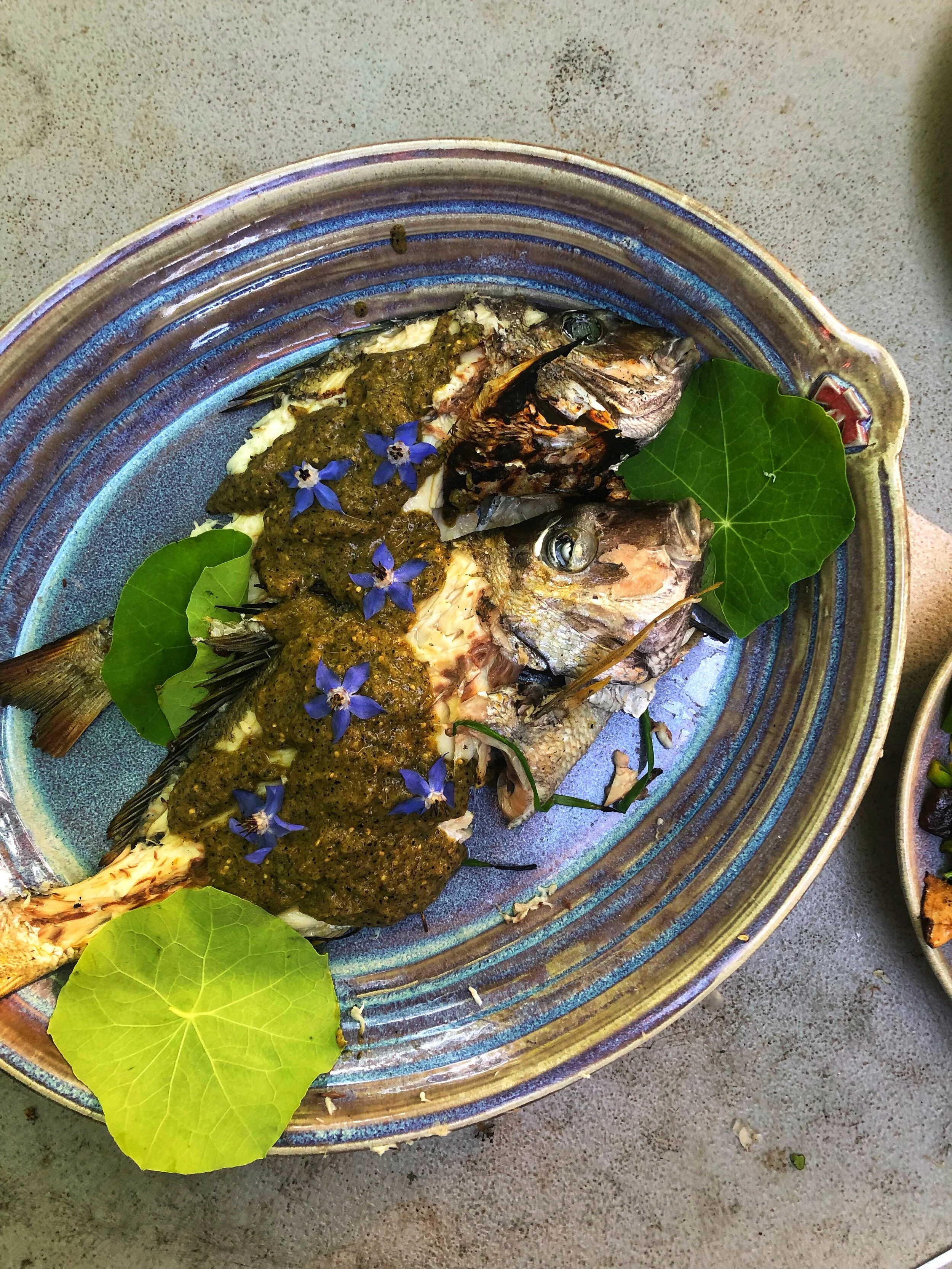The following is an article I wrote for Edible Vineyard magazine. If you haven’t already gotten on the gram train… I suggest you do.
Several months ago, I submitted a recipe for a simple pasta dough to an editor at The MV Times (and one of the editors of this formidable magazine). Without thinking, I submitted the recipe using grams as the unit of measure. As a chef, this is standard practice, and I am regularly interpreting and creating recipes this way. And bakers will tell you there is no other way. Little did I know this reliance on grams would spark an ongoing conversation about why exactly they are used in recipes.
There are several answers to this question. The first being, you can’t confuse grams. The gram is a unit of measure for weight, and weight only. Ounces can be a unit of volume or a unit of weight, and there is the problem: Dense liquids such as heavy cream don’t have the same volume as water. If you’re eyeballing these two liquids by volume, you’ll end up with a lot more cream than you need. The volume-to-weight difference might be minor on a small scale of one ounce by volume. However, when you multiply that exponentially in a recipe that calls for measurements by weight, it can completely change a recipe.
Secondly, grams are very small, which means you rarely need to deal with fractions. Though I occasionally measure things like yeast to the tenth of a gram, a gram is small enough that you rarely have to break it down further. With grams, I never have to do anything like dividing ⅓ of a cup by seven. When cooking fresh vegetables or fish for a family meal, I am not weighing anything. I cook by feel, instinct, and muscle memory. Flavor, and texture can be adjusted by adding ingredients as you cook. But when baking, making dough for pasta, or even a complex mousse or sauce, I’m sticking to grams. I measure everything as accurately as possible, because you cannot change the flavor or texture of most things once they are baked. When I cook for large groups I often multiply a recipe several times. Using grams when I multiply by two or even ten times, my recipe will be just as good as a single recipe and consistent across the board.
Measuring everything by weight is also extremely helpful when understanding proportions. Not everyone knows off the top of their head that there are three teaspoons in a tablespoon, or 16 tablespoons in a cup. The difference between 5 grams and 500 grams is a lot easier to understand, break down, and multiply.
Then there’s the fact that not all measuring cups are actually the same size. Different brands of measuring cups are slightly different in size and shape. When the average cook eyeballs a measurement, it can easily be off by a significant percentage. In order to illustrate this point, I asked two friends to measure out a cup of flour using the exact same measuring cup. I weighed them using a digital scale set to measure grams. Though both appeared to be full and level, the two measurements were different by nearly 30 grams. If you were making a large batch of biscuits and had to multiply a recipe by ten times, you could have ended up with an extra 300 grams of flour in our recipe. Additionally, grams are an internationally used and understood unit of measure. It’s mostly just in the U.S. that cooks are still weighing things in pounds and ounces. When you’re able to use grams, it allows you to open up your tastebuds to recipes from around the world, and share your own recipes with cooks outside the U.S. (and vice versa).
Don’t be intimidated by a recipe that uses grams. If you don’t already own one, get yourself a digital kitchen scale. They can be found in any cooking store, and even some grocery stores. Simply flip it on, and hit the unit button until it reads grams. Each time you weigh something, place the empty container or measuring cup on top of the scale and hit “tare.” This will zero out the weight of your container, allowing for easy measuring. Simply put your ingredients in the preweighed container, and voilà, grams are your new best kitchen friend.
Gavin Smith is a fishing columnist for The MV Times, a frequent contributor to The Times and this magazine, and a private chef.




